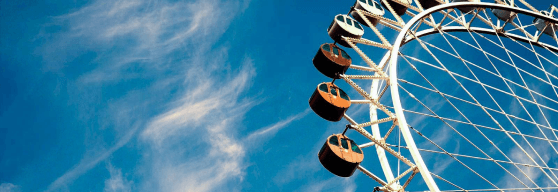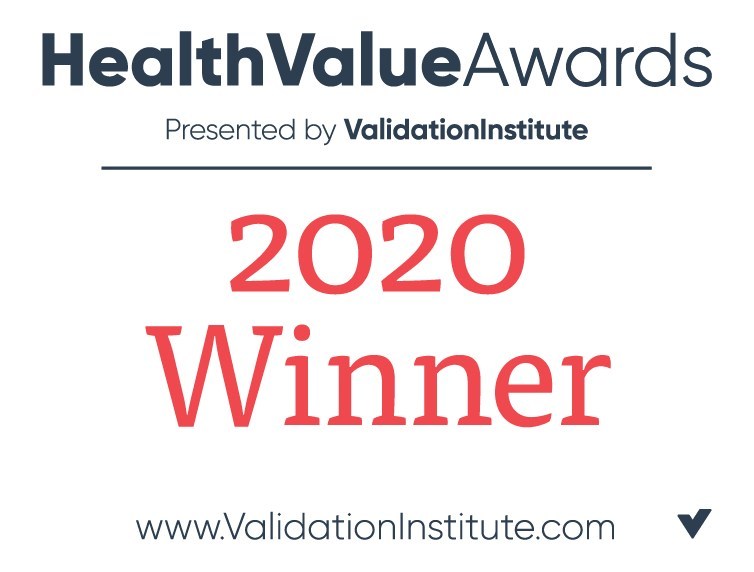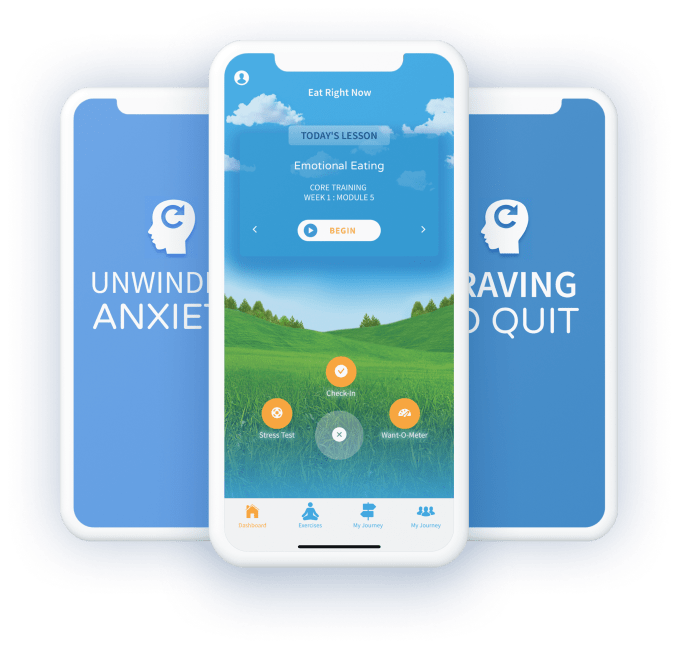(Have you read the “Everyday Addictions” article about how habits form and how addictions get started? If not, you may want to check it out first. Read it here.)
While the internet is full of “tips and tricks” to beat bad habits, change behaviors, and overcome everyday addictions, there are only a few potential pathways that psychologists and treatment specialists have outlined that are evidence based, though I should warn you up front that not all are created equal – some of them depend a lot on what genes our brains are endowed with. Many behavior change strategies only target one part of your brain, leaving you dangerously unprotected at just the moment you need the most help. But, modern science many have revealed how some ancient practices can bring old and new brain together. (If you’re interested in learning about the old and new brain, check out my article on Habit Loops and Everyday Addictions here.)
Susan Shain wrote a New York Times article with a catchy title: “How to Crush Your Habits in the New Year With the Help of Science.” Ms. Shain outlines some usual suspects for how to work with everyday addictions: willpower, substitutions, priming your environment (aka avoidance), celebrating success, breaking habit change down into small steps, and planning to fail. Yes, habits are so hard to change, that as part of my addiction training, I was taught to help my patients expect failure. But surprisingly, Susan’s article left out one effective, science-backed approach. More on that in a minute.
You might have already tried some of these habit change strategies (and hopefully haven’t failed too much), so I will give some basics, and then provide some resources so that you can dive in if you want to learn more.
But first, we have to go back to the simplified model of the of our brain we discussed in the Habit Loops and Everyday Addictions post.
Our brains are just trying to survive!
Remember, our old brain is set up to help us survive. In addition to reward-based learning, it has another trick up its sleeve: it takes what it learns and moves the learning into “muscle” memory as quickly as possible. In other words, our brains are set up to form habits so we can free up the brain space to learn new things. For example, imagine getting up every morning and having to relearn how to stand up, put on our clothes, walk, eat, talk etc. We’d be exhausted by noon. In “habit mode” we act quickly, without thinking, because we don’t need to think in those moments. Think of this as our old brain telling our new brain “don’t worry, I’ve got this. You don’t have to spend energy here and can think about other things.”
This is partly how the newer parts of our brain were able to evolve the ability to think and plan. From an anatomical perspective, this brain region is called the prefrontal cortex (PFC), and is located just behind our eyes and our forehead.
Since our old/habit brain has our back, our prefrontal cortex is freed up to think and plan for the future. This is also the part of the brain that we count on for controlling ourselves. If we see a donut, our old brain tries to impulsively pounce on it, thinking “calories, survival!” After all, someone else might swoop in and eat it, so we need to get to if first (our old brain functions in scarcity mode, always worried about starvation). Our new brain says to our old brain: “Hold off a minute. You just had lunch. This is not healthy and you’re not even hungry!” Think of it this way. Our new brain is that rational voice that helps us hold off and eat our vegetables before we have dessert. Yes, our new brain is that bit that helps us keep our new years resolutions (and ironically, is that same voice that judges us when we fail).
Anti-Addiction Strategy #1: Willpower
Let’s talk about anti-addiction strategy #1: willpower. Good old fashioned stick-to-it-ness. Your newer brain telling your older brain to take a hike and ordering the salad instead of the hamburger. There are tons of books written about how to build the mental willpower muscle, and many of them are worth a read. Willpower seems like it should work, but there are two big caveats.
First: recent research is calling into question some of the early studies on willpower, some showing that willpower is genetically endowed for a lucky subset, and others being as bold as suggesting that it is more of a myth [link to willpower myth article]. Other studies have found that people who exerted more self-control were not more successful in accomplishing their goals. On top of that, the more effort they put in, the more depleted they felt [refs: https://buff.ly/2VIpXX4 https://buff.ly/2CgTBd9]. Buckling down, gritting our teeth and forcing ourselves to “just do it” might be counter-productive, helping out in the short term but not working in the long term when it really counts. As in, being really strict about your new years resolutions in January might make them harder to stick to in February…
The second caveat is the scientific discovery that the prefrontal cortex (remember: this is the youngest part of our brain from an evolutionary perspective) is where the willpower magic happens. Which is fine under normal conditions, but when we get stressed (saber toothed tiger, email from our boss, fight with a spouse, being tired or hungry) our old brain takes over and overrides our newer brain – basically shutting it down until the stress is gone. So exactly when we need our “new brain” willpower, it’s not there, and our old brain eats cupcakes until we feel better and our new brain is back online. Is it any wonder many of us feel so guilty? So for most of us, willpower failure may be more of a matter of brain wiring (and evolution) than a failure on our part. Here’s a nice summary article aptly entitled “Why willpower is overrated”
Anti-Addiction Strategy #2: Substitution
Substitution is pretty simple, but also relies on the new brain. If you have a craving for X, do Y instead. As in, substitute Y behavior for X. This has a lot of science behind it, and is one of the go-to strategies that we learn in addiction psychiatry. For example, if you want to quit smoking, and have a craving, eat candy instead of lighting up a cigarette. This works for many folks, but as some of the research has shown from my lab and others, it may not uproot the craving itself. As in, the habit loop stays intact, but the behavior is simply changed to something healthier (we can argue about how healthy candy is later, but you get the idea). Since the habit loop is still there, this also makes it more likely that you fall back into the old habit at some point in the future.
Anti-Addiction Strategy #3: Environment
Anti-addiction strategy #3 is priming your environment. Yes, new brain here too! Basically, this means if you are tempted by ice cream, don’t keep ice cream in the freezer. This sounds pretty straight forward; I bet we can all relate to this ourselves. Indeed, several labs have specifically studied this and have found that indeed people who have good self-control tend to structure their lives in a way that they don’t need to make self-control decisions in the first place. What helps this? Routine. Getting in the habit of exercising every morning or buying healthy food at the grocery store makes it more routine to stay fit, and to cook nutritiously.
Here’s a link to an article that describes 6 studies showing that beneficial habits mediate the relationship between self-control and positive life outcomes: https://buff.ly/2Rb8iZn
Anti-Addiction Strategy #4: Mindfulness
This fourth approach is the one that was left out of the article I mentioned earlier, but it targets both the new brain and the old brain (yes! read on). What is mindfulness? The most commonly used definition comes from my friend Jon Kabat-Zinn PhD, the author of a number of best-selling books including “Full Catastrophe Living” and “Wherever you go, there you are.” He also created the Mindfulness-Based Stress Reduction (MBSR) program that is the most widely disseminated and studied 8-week mindfulness course on the planet. Jon’s definition goes like this: “The awareness that arises when paying attention in the present moment, on purpose, non-judgmentally.” Basically, he is pointing to two aspects of experience: awareness and having a curious attitude.
Let’s unpack that a bit. Remember how our old brains react to positive and negative reinforcement to determine what to do, and then is really good at turning that behavior into habits?
If we aren’t aware that we’re doing something habitually, we will continue to do it habitually. Jon describes this in terms of “autopilot.” If we’ve driven the same road a thousand times, it becomes pretty habitual. We tend to zone out and think of other things while we’re driving -sometimes to the point where we don’t even remember how we got home from work. We were at work, then we were at home. We might remember a podcast that we listened to on the way, but that might be it. Magic? No, habit.
Building awareness through mindfulness helps us “pop the hood” on what’s going on in our old brain. We can learn to recognize our habit loops while they’re happening, rather than “waking up” at the end of them.
Once we’re aware of our habit loops – when we’re on autopilot – we can then get curious about what is happening. Why am I doing this? What triggered the behavior? What reward am I really getting from this? Do I want to keep doing this?
Curiosity is that key ingredient, that key attitude that helps awareness help us change habits. And it can become a powerful reward on its own. Do you remember the last time you were curious about something? That emotion is a powerful reward itself – signaling to your old brain that this is better than a quick sugar rush followed by tons of guilt.
This frees up the new brain to do what it does best: make rational and logical decisions.
You tell me, what conditions make it better and easier to change a habit?
When we wake up in the middle of an ice cream binge, or are pulled to Amazon to look at shoes again, and then judge ourselves, telling ourselves that we’re a pig or whatever? Is this the time when we can change these habits? Or when we become aware of the behavior, and then get curious and start mapping out what our mind is doing. “Oh, wow look at how I’m going along on autopilot, like a zombie.” That curiosity is key to being open and receptive to change. Carol Dweck talked about this decades ago when she described “fixed” vs. “growth” mindsets. When we’re stuck in our old habits (including judging ourselves), we’re not open to growth. My lab has even mapped out a part of the brain that is associated with this, and Anderson Cooper from CBS’ 60 Minutes demonstrated getting caught up in anxiety vs being mindful on camera.
Mindfulness might seem like all the rage right now, but why is that the case? In a nutshell, it is probably because of several factors, including accessibility (you can download a gazillion apps that will teach you a multitude of meditation techniques -even in many languages), and science (there has been an explosion of research studies published on meditation over the past decade).
Mindfulness is more than “relaxation”
But if it’s so popular, why was it left out of an article on habit change? Well, for most people, mindfulness is seen just as a way to relax and de-stress – to “slow down and smell the roses.” And while that’s a great goal by itself, I’m most interested in what mindfulness actually does to the brain, and how it can help us break bad habits. In fact, in my lab we’ve scanned the brains of people while they were practicing mindfulness, and mapped out the specific brain regions involved in curiosity, and getting caught up in cravings -the root of addictive behaviors.
While the scientific field around mindfulness is still young, there are some consistent findings that are coming out of the work. Studies from multiple labs have found that mindfulness specifically targets the key links of reward-based learning. And by applying specific mindfulness techniques to behavior change, my lab found a 5x better quit rate for smoking than cognitive therapy, a 40% reduction in eating in response to craving, and more recently an almost 50% reduction in clinically-validated anxiety symptoms in people with moderate to severe anxiety.
OK, let’s sum it up…
Even though it might feel like we’re constantly under the spell of our phones, favorite shopping sites, social media feeds or simply our thoughts, never before have we known so much about how our brains (and minds) work. The science is more solid than ever. We now know why social media is so sticky, how we get caught in endless worry habits and why diets fail. And we also know how to bring together old and new brain, ironically, through old techniques (mindfulness) and new science (brain imaging etc). While the outlook might feel bleak when we’re in the middle of an everyday addiction, the promise of specific solutions has never been better. We now have access to the same tools the marketers have been using for years -a concrete understanding of how our mind works. Don’t throw away your phone or block Amazon so you can’t impulsively buy yet another pair of shoes. Learn how your mind works, so you can work with it. Use awareness and curiosity to transform all of that energy in a better way. Let’s lock in the habits of kindness and curiosity as those rewards that pay it forward, for ourselves and others -because they feel so good. Continued use, with no adverse consequences. That’s a winning formula.
- Our brains are set up to get hooked. It’s not our fault, they’re trying to help us survive
- Old brain: acts on impulse. Reward-based learning. Trigger -> behavior -> reward (repeat). This is how habits are set up so that we react on autopilot.
- Modern world: designed to addict. Food, phones, email, shopping, dating apps (you name it) are all engineered to trigger dopamine release in our brains. We get addicted to everyday things.
- New brain: rational, logical decision-maker. Self-control/willpower. Too inexperienced/weak to compete with the old brain.
- Current habit change strategies: rely largely on new brain. Often fail because the prefrontal cortex goes offline when needed most (stress, hunger, tiredness etc.)
- Modern science: bring old and new together. Mindfulness (and other strategies like motivational interviewing) tap into reward-based learning to help our brains see the lack of reward in harmful habits (i.e. how bad they really feel), and the real rewards of helpful habits (e.g. curiosity, kindness etc.)
- Understanding our minds helps us change our brains. Awareness, curiosity and kindness are key for learning (e.g. growth mindset).
Follow me on twitter to keep up with the latest: @judbrewer



